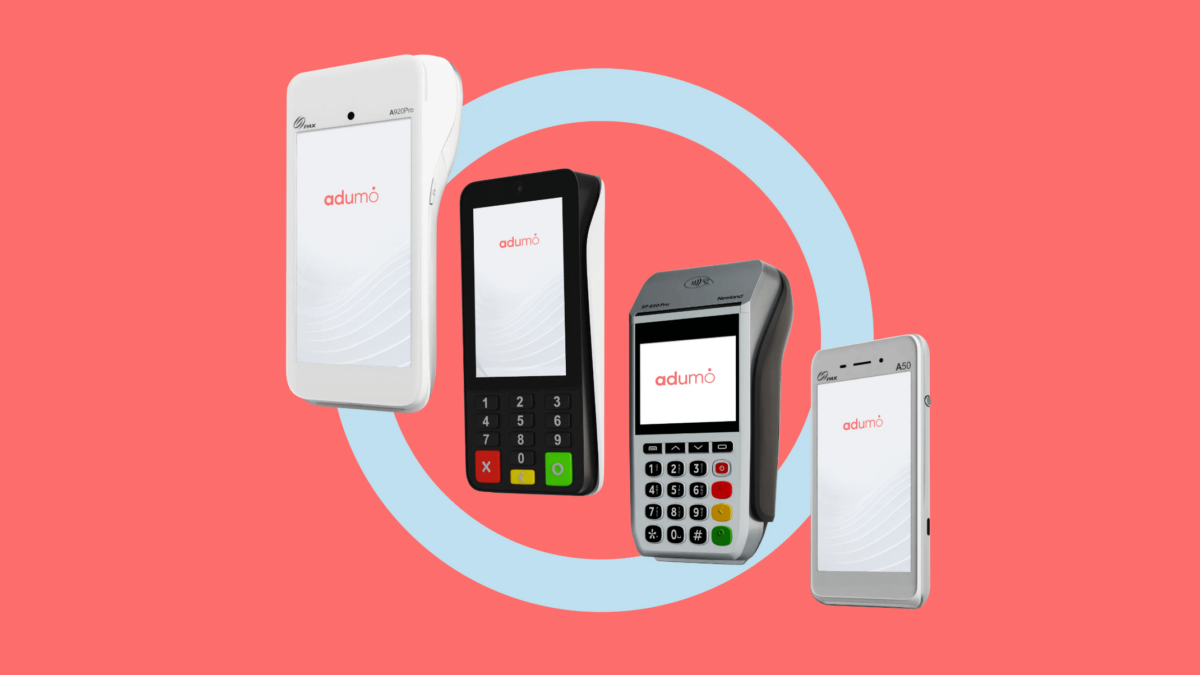In today’s fast-paced and digital-driven world, financial service providers have a unique opportunity to leverage technology to empower consumers and help them achieve financial well-being.
Through innovative fintech approaches and advanced Bank Tech solutions, financial institutions can support consumers in lifting their financial burdens, enhancing their financial literacy, and securing their financial futures.
By offering personalized financial planning tools, digital banking solutions, fraud prevention measures, and financial wellness programs, these providers can empower consumers to make informed financial decisions, build savings, and strive towards their financial goals.
This holistic approach not only benefits individual consumers but also contributes to the overall economic resilience and prosperity of society.

Trending, consumers are increasingly turning to innovative fintech and bank tech solutions to manage their financial well-being.
These tools offer a sense of security and peace of mind, allowing individuals to take control of their finances and make informed decisions.
However, navigating the complex landscape of financial technology can be daunting, with various issues and considerations to keep in mind. From data security and privacy concerns to ensuring financial inclusivity for all, it is crucial to address these challenges and leverage technology to uplift consumers and help them achieve financial empowerment.
By examining the critical issues, exploring different thought processes, and implementing sustainable solutions, we can pave the way for a more inclusive and consumer-centric financial ecosystem.
Ensuring peace of mind with tech tools and packs is important for consumers who rely heavily on these devices in their daily lives.
Several issues can arise in this regard, such as the fear of losing or damaging expensive gadgets, concerns about cybersecurity and privacy, and the need to stay organized and efficient while on the go.
When it comes to the fear of losing or damaging tech devices, consumers can invest in protective cases, screen protectors, and insurance plans to mitigate the risk.
Additionally, they can use tracking devices like Tile or Find My iPhone to locate lost gadgets.
Cybersecurity and privacy are also major concerns for consumers, especially with the increasing amount of personal information stored on devices.
To address this issue, consumers should make sure to update their security software regularly, use strong passwords, and enable two-factor authentication where possible.
They should also be cautious about sharing personal information online and avoid downloading suspicious apps or clicking on suspicious links.
Staying organized and efficient while on the go can be a challenge, but there are several tech tools and packs that can help. Consumers can invest in smart backpacks with built-in chargers, cable organizers, and laptop compartments to keep all their devices and accessories in one place.
They can also use productivity apps like Evernote or Trello to manage their tasks and schedules, and VPNs to securely connect to public Wi-Fi networks.
Ultimately, by staying informed about potential issues and investing in the right tools and solutions, consumers can have peace of mind when it comes to using tech devices and packs in their daily lives.
In the realm of financial technology, service providers play a pivotal role in helping consumers achieve financial well-being and empowerment.
By offering innovative solutions and personalized assistance, these tech companies can guide individuals towards better financial outcomes and improved peace of mind. For example, digital budgeting apps can help users track their expenses and savings goals, while investment platforms provide access to diverse investment opportunities and education.
Additionally, online banking services offer convenience and accessibility, allowing consumers to manage their finances anytime, anywhere.
Through collaborative efforts and tailored services, tech providers can empower consumers to make informed decisions and elevate their financial health.
Tech service providers can help consumers lift their worries and concerns by offering a range of services and solutions. Here are a few examples of how tech service providers can assist consumers:
1. Customer support: Tech service providers can offer responsive and reliable customer support to address any technical issues or concerns that consumers may have. This can include phone support, live chat, email support, and self-help resources on their website.
2. Device setup and installation: Tech service providers can offer assistance with setting up and installing new devices, software, or apps. This can help consumers avoid the stress and frustration of trying to figure out how to configure their devices on their own.
3. Data backup and recovery: Tech service providers can offer data backup and recovery services to help consumers protect their important files and documents from loss or corruption. This can provide peace of mind knowing that their data is securely backed up and can be easily recovered if needed.
4. Cybersecurity services: Tech service providers can offer cybersecurity services such as antivirus software, firewalls, and malware protection to help consumers protect their devices and personal information from cyber threats. This can help consumers feel more secure when using their devices online.
5. Tech training and education: Tech service providers can offer training and education resources to help consumers learn how to use their devices effectively and safely. This can help consumers feel more confident and empowered when using their tech tools.
By offering these and other services, tech service providers can help consumers lift their worries and concerns and enjoy a more seamless and stress-free tech experience.
Exploring how government intervention can support consumers in improving their financial well-being is essential.
By implementing policies that promote financial literacy, such as including personal finance education in school curricula or offering workshops at community centres, individuals can develop the knowledge and skills necessary to make sound financial decisions.
Additionally, the government could enforce regulations to protect consumers from deceptive practices, like introducing laws that require clear disclosure of terms and conditions for financial products.
Furthermore, establishing programs that provide financial assistance to low-income households, such as affordable housing initiatives or subsidies for essential services, can help alleviate financial burdens and promote upward mobility.
Through these various initiatives and policies, the government has the potential to significantly impact consumers’ financial health and empower them to achieve economic stability.
Centrally, the government can help consumers lift their burdens and concerns through various policies, regulations, and programs aimed at protecting their rights and interests. Here are a few ways in which the government can assist consumers:
- Consumer protection laws: The government can enact and enforce consumer protection laws to ensure that consumers are treated fairly and honestly by businesses. For example, laws against false advertising, unfair pricing practices, and deceptive marketing tactics help protect consumers from being misled or exploited.

- Product safety regulations: The government can establish product safety regulations to ensure that goods sold in the market meet certain safety standards and do not pose a risk to consumers. For example, regulations on food, toys, electronics, and pharmaceuticals help protect consumers from unsafe products.
- Consumer education programs: The government can implement consumer education programs to help consumers make informed decisions and protect themselves from scams, fraud, and other risks. For example, the government could provide resources and information on financial literacy, online safety, and consumer rights to empower consumers to make smarter choices.
- Consumer complaint mechanisms: The government can create channels for consumers to report complaints and seek redress when they have been treated unfairly or have encountered problems with products or services. For example, consumer protection agencies or ombudsman offices can help consumers resolve disputes with businesses and seek compensation for damages.
- Access to justice: The government can support consumers’ access to legal assistance and redress mechanisms by providing funding for legal aid programs, consumer advocacy groups, and alternative dispute resolution services. This can help consumers seek justice and hold businesses accountable for any wrongdoing.
By implementing these and other measures, the government can help consumers lift their worries and concerns, promote consumer confidence, and ensure a fair and safe marketplace for all.
As we consider the fintech approach and Bank Tech pack, it is crucial to emphasize their potential impact on consumer well-being and financial empowerment.
By incorporating features that prioritize transparency, accessibility, and personalized services, these technology-driven solutions can significantly benefit individuals seeking to enhance their financial health. Features like budgeting tools, real-time transaction monitoring, and tailored investment recommendations can empower consumers to make informed decisions and improve their financial outcomes.
Through the integration of consumer-centric practices and innovative technologies, the fintech approach and Bank Tech pack have the potential to uplift individuals and promote financial inclusion in a rapidly evolving digital landscape.
Essentially, the fintech approach and Bank Tech pack can play a crucial role in helping consumers lift their financial burdens and achieve peace of mind. Here are some key elements that should be included in the fintech approach and Bank Tech pack to support consumer lifting:
- Financial literacy tools: Provide consumers with access to user-friendly financial literacy tools and resources to help them understand personal finance, budgeting, saving, investing, and managing debt effectively. These tools can empower consumers to make informed financial decisions and improve their financial well-being.
- Personalized financial planning: Offer consumers personalized financial planning services powered by artificial intelligence and machine learning algorithms. This can help consumers set and achieve their financial goals, create customized savings and investment plans, and track their progress over time.
- Digital banking solutions: Provide consumers with seamless and secure digital banking solutions that make it easy to manage their finances, access account information, transfer funds, pay bills, and conduct other banking transactions online or through mobile apps. These digital tools can streamline banking processes and enhance convenience for consumers.
- Fraud detection and prevention: Implement robust fraud detection and prevention measures to protect consumers from identity theft, fraud, and other financial scams. Use advanced technologies such as biometrics, encryption, and artificial intelligence to safeguard consumer data and transactions.
- Financial wellness programs: Offer financial wellness programs and services to help consumers improve their financial health and resilience. This can include access to financial coaching, counseling, debt management services, and savings incentives to support consumers in achieving their financial goals.
- Customer support and communication: Provide consumers with responsive customer support and transparent communication channels to address their inquiries, concerns, and feedback promptly. Utilize chatbots, virtual assistants, and other technologies to deliver personalized and efficient customer service experiences.
By incorporating these elements into the fintech approach and Bank Tech pack, financial service providers can empower consumers to take control of their finances, make sound financial decisions, and achieve greater financial stability and peace of mind.
In conclusion, the convergence of fintech innovations and Bank Tech solutions represents a transformative force in the financial services industry, with the potential to uplift consumers and drive positive financial outcomes.
By incorporating elements such as financial literacy tools, personalized planning services, digital banking solutions, fraud prevention measures, financial wellness programs, and responsive customer support, financial service providers can create a more inclusive and empowering financial ecosystem.
Through these initiatives, consumers can enhance their financial knowledge, make smarter financial decisions, and achieve greater financial stability and peace of mind.
Ultimately, the collaboration between technology providers, financial institutions, and policymakers is essential in shaping a more resilient and consumer-centric financial landscape for the benefit of all.








